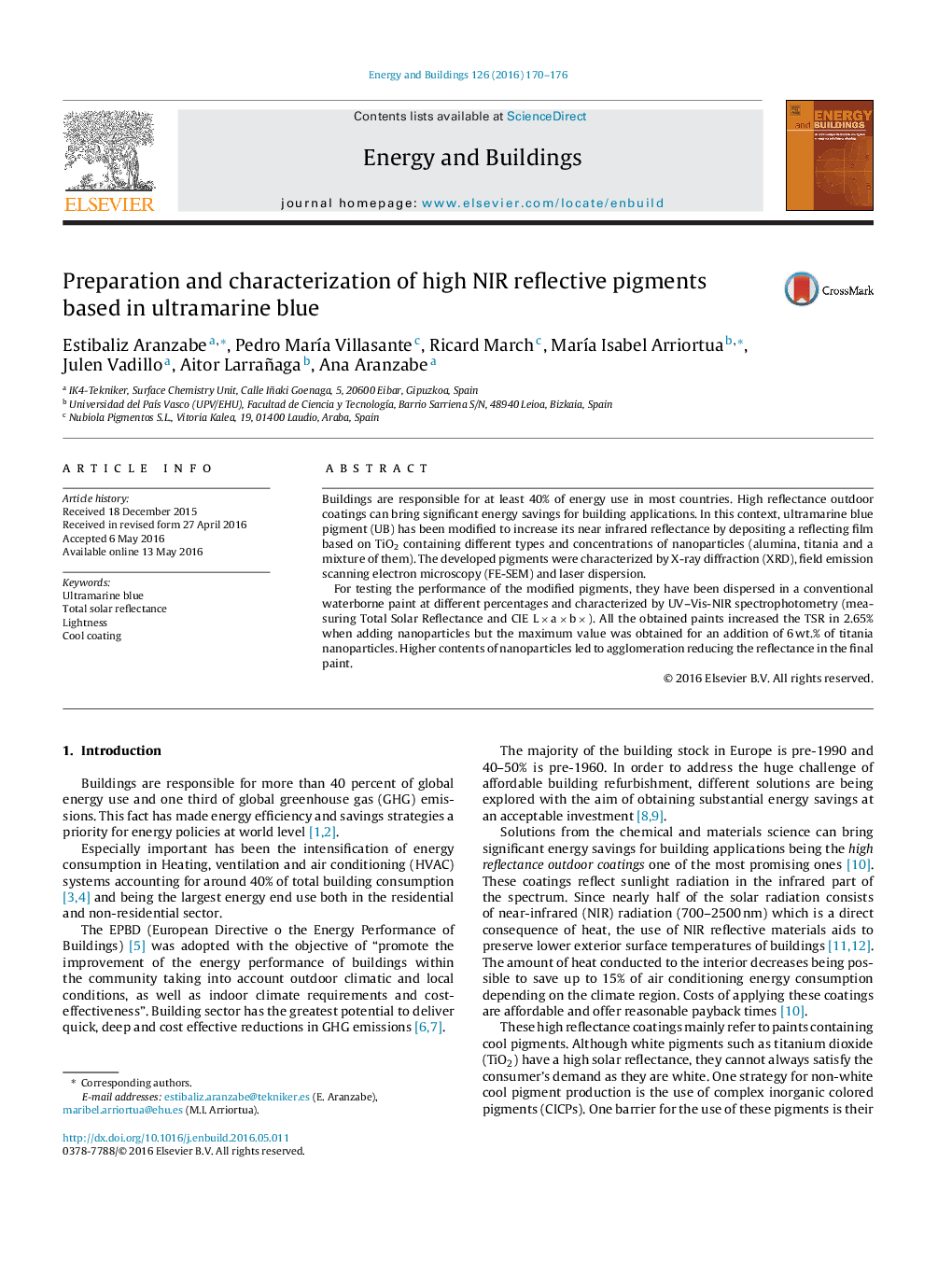| Article ID | Journal | Published Year | Pages | File Type |
|---|---|---|---|---|
| 261925 | Energy and Buildings | 2016 | 7 Pages |
•Ultramarine blue has been coated with different reflecting films based on TiO2 containing different types of nanoparticles.•The prepared pigments have been dispersed in a waterborne paint at different percentages and Total solar Reflectance and lightness were measured.•The linear equation relating DL (lightness) and TSR for each material has been calculated and the TSR has been compared for a standard DL value of 65.•The obtained paints increased the TSR when adding nanoparticles obtaining the maximum value for an addition of 6%wt. of titania nanoparticles.
Buildings are responsible for at least 40% of energy use in most countries. High reflectance outdoor coatings can bring significant energy savings for building applications. In this context, ultramarine blue pigment (UB) has been modified to increase its near infrared reflectance by depositing a reflecting film based on TiO2 containing different types and concentrations of nanoparticles (alumina, titania and a mixture of them). The developed pigments were characterized by X-ray diffraction (XRD), field emission scanning electron microscopy (FE-SEM) and laser dispersion.For testing the performance of the modified pigments, they have been dispersed in a conventional waterborne paint at different percentages and characterized by UV–Vis-NIR spectrophotometry (measuring Total Solar Reflectance and CIE L × a × b × ). All the obtained paints increased the TSR in 2.65% when adding nanoparticles but the maximum value was obtained for an addition of 6 wt.% of titania nanoparticles. Higher contents of nanoparticles led to agglomeration reducing the reflectance in the final paint.
